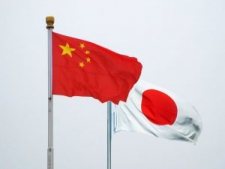The Similarities Between Chinese and Japanese

Posted on June 26, 2014 by Chris
Chinese and Japanese are two of the most sophisticated dialects in the world and with that being said, they can be incredibly difficult to learn and understand.
With their ample amount of characters and how they are written, there are a variety of similarities between Chinese and Japanese. The similarities can make it difficult for beginners to differentiate between the two languages.
Understanding Kanji Characters
Kanji characters are extremely sophisticated and are used in both Chinese and Japanese languages. One of the main differences between the two languages is that there are far more kanji characters used in Chinese than Japanese. Although, 80% of the kanji characters are used in both languages and commonly have the same meaning. Another similarity between the kanji characters used in Chinese and Japanese is that they look exactly the same, making it quite difficult to see the differences between the two.
More Differences than Similarities
Much like other languages, Chinese and Japanese have far more differences than similarities. Although the Japanese mostly use Chinese kanji to describe common words, they can be pronounced differently and used differently in sentences. With that being said, it is far simpler to distinguish the two languages based on their differences.
The Japanese Honorific System
In comparison to the Chinese language, the Japanese use an honorific system when you are speaking to an individual that is of greater, equal, or less power than yourself. In the event of you having a conversation with another person, you will have to determine whether they are superior to you or not. As an example, if you’re speaking with your boss you would have to use an entirely different group of words in comparison to if you were speaking to your sibling.
The Tonal Aspects of Chinese
Chinese is commonly referred to as a tonal language. This means that the pronunciation of a word will determine what its meaning is. There are 5 different inflections (also known as tones) that can change the meaning of a word. As an example, if you read “ma”, depending on how you pronounce it, it will have 5 different meanings. In the Japanese language, there are no tonal differences.
Chinese and Japanese are two distinct languages that are difficult to learn and to understand. With the appropriate amount of schooling, individuals can learn about the differences associated with both languages. In terms of similarities, the use of kanji symbols are what make the two languages alike.




